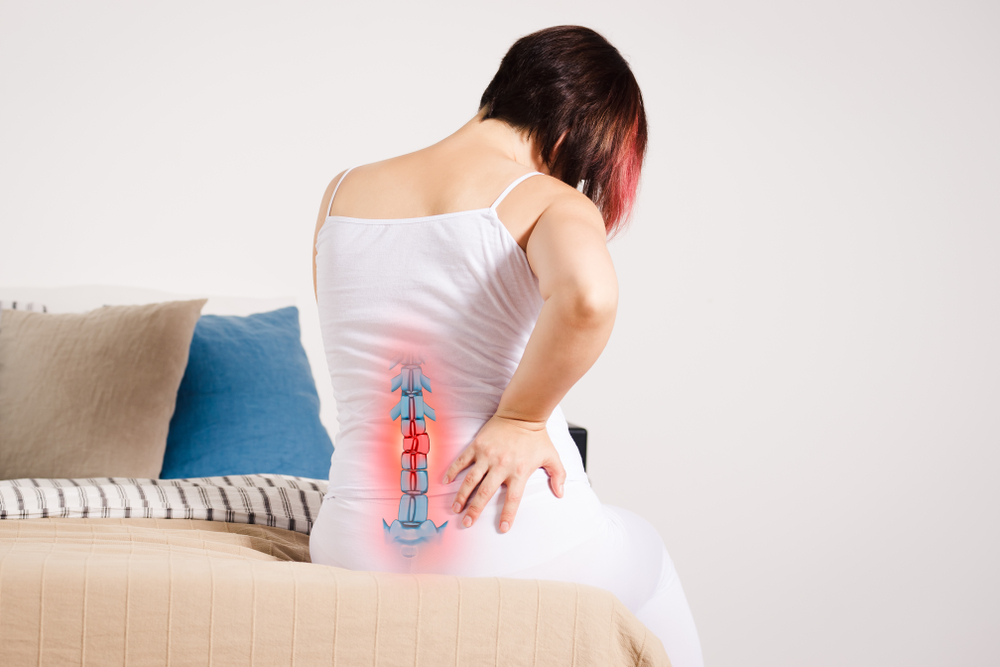Symptoms, Diagnosis, and Treatment of Slipped Disc

Slipped Disc – What is it? Diagnosis, Symptoms, and Treatment
What is Slipped Disc?
Your spine is made up of a sequence of bones ranging from the head to the end of the tailbone. These bones are medically called vertebrae between which are placed round cushions. These round cushions are called discs and when they get leaked or misplaced, they become slipped discs. The discs are the parts that allow you to move comfortably and when they get ruptured, the patient gets back or neck pain.
The disc is a soft, jelly-like structure cased in a rubbery outer surface. The peripheral is called the annulus and when the annulus gets a tear, some of the nuclei come out resulting in slipped or herniated disc. This ailment can happen anywhere in the spine from the skull to the tailbone.
Usually, the lower back is the most affected part. There are no prominent symptoms of slipped disc except slipped disc pain and the treatment is also simple and effective. Let us now discuss the other aspects of slipped discs.
Slipped Disc Symptoms
The symptoms of slipped disc vary as it depends on whether the ailment has affected the lower back or the neck. In most cases, one side of the lower back gets affected. Similarly, it also depends on the fact if the herniated disk is compressing down any nerve or not. Let us discuss slipped disc symptoms now.
Sharp or Burning Pain
Pain is one of the primary slipped disc symptoms. It is the area or the body part that signifies
which part of the spine is affected. If you are experiencing pain in your lower back which also at times transfers to the legs, buttocks, and calves then it is most likely that your lower spine is
affected. Slipped disc in your neck can affect your shoulders and arms. Typically, the pain will
be intense when you try to move or cough.
The sides of the neck and fingers are also disturbed when the disc gets dislocated around the
neck area of the spine.
Tingling
Another prominent symptom that confirms slipped disc pain is the tingling or feeling of
numbness around different body parts. When the round disk is affected because of any reason,
it may sometimes suppress a nerve or two which results in tingling or numbness. Again, the part of the disc dislocation determines which area of your body will get affected.
Weakness in Muscles
Muscles around the affected area tend to weaken over time. The affected muscles will further
be unable to hold stuff or can even cause stumbling.
All these are the most common indications of this condition. In other cases, some patients may
not experience any symptoms at all unless they are screened and passed through a test.
Causes of Slip Disc
Disk degeneration is a process in which gradual wear and tear of the discs take place
concluding slipped disc. As the person ages, his body parts including the discs become weak
day-to-day resulting in complications even with minor inconvenience. There is no cause to
pinpoint when it comes to slip discs but there are a few related factors which can be blamed for the same. Let us discuss these below.
Genetics and Weight
Excessive body fat in the body causes pressure on the spine which affects the lower back and
sometimes even the neck. This extra stress triggers the disc to rupture or degenerate instigating pain and weakness in the muscles.
Along with weight, some people may also suffer from this ailment because of genetic grounds.
They inherit defective discs from their parents and grandparents.
Occupational Conditions
Some people require sitting throughout the day for their occupational duties that severely affect their lower back. Pulling, bending, and pushing also instigate back and spine problems. One must try to move a little to keep their body parts in action and prevent stiffness.
Slipped Disc Treatment
This condition can be easily treated by modifying a few actions and taking prescribed
medications throughout the required course. For most patients, this method works and they
sense relief. One can also sign up for physical therapy in which the patient will be advised a few exercises to open up the stiff muscles and relieve pain.
While this ailment can be treated through the above-suggested slipped disc treatment methods,
surgery is also performed in difficult cases. Surgery is considered in those cases wherein the
patient sees no improvement even after six weeks of treatment and experiences extreme pain
along with loss of bowel control. Surgery helps remove the defective part of the disc and an
artificial disc may be placed in accordance with the required action.
Summary
A herniated disc is a condition that comes with regular wear and tear of the body. In a few
cases, this may develop because of underlying causes. The treatment is available and should
be taken whenever required.






